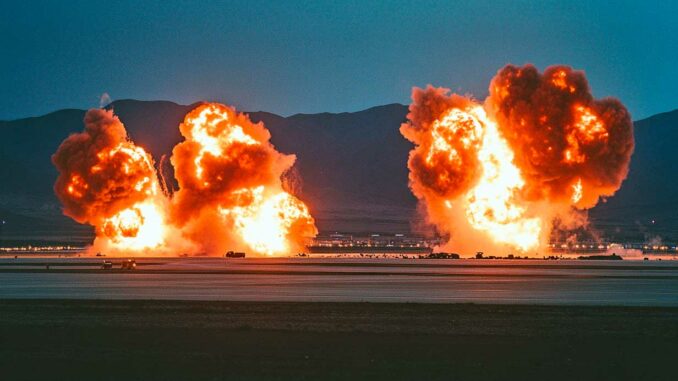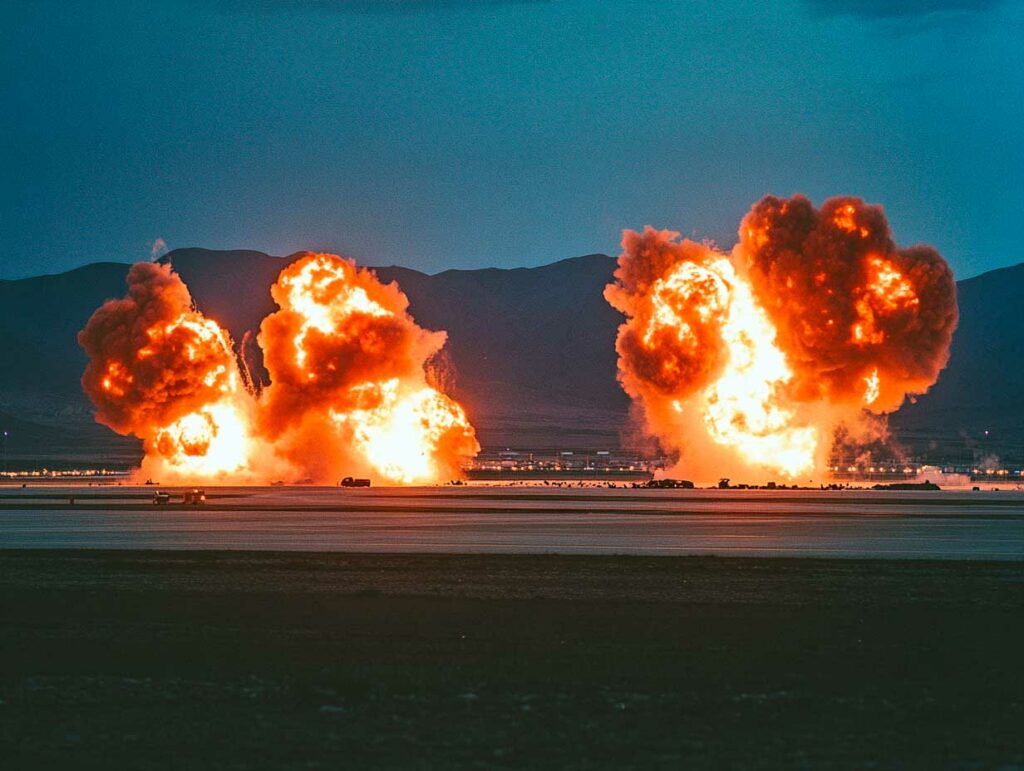
The Israeli attack on an Iranian refueling aircraft 2,250 km away marks a major tactical step in Operation Rising Lion.
Operation Rising Lion, launched by the State of Israel, marks a turning point in 21st-century asymmetric conflicts. One of its most significant strikes took place more than 2,250 km from Tel Aviv, targeting an Iranian refueling plane at Mashhad airport. This strike illustrates the IAF’s exceptional operational reach and its determination to establish air superiority in Iranian airspace. It comes amid a context of mutual escalation, with Iranian forces responding with more than 70 ballistic missiles and around 100 drones, causing heavy human casualties and destroying critical infrastructure in Israel. The following article details the technical, strategic, and human dimensions of this confrontation, examining the short- and long-term implications.
An unprecedented long-range strike in Israeli doctrine
The strike on June 15, 2025, in Mashhad, a city in the far northeast of Iran, represents the longest air operation in the history of the IAF to date. The target was an Iranian KC-707 or KC-747 tanker aircraft stationed at Shahid Hasheminejad International Airport. According to estimates, the necessary range was around 2,250 km one way, requiring the use of Israeli tanker aircraft or long-range munitions.
The elimination of this aircraft has significant consequences: it is an essential vehicle for IRIAF long-range operations, particularly for the transport of sensitive equipment or the evacuation of senior officials. Iran has a very limited number of these aircraft, and only one modified 747 was still operational.
This strike is part of a strategy to establish total air superiority, made possible by the use of SPICE 1000 guided munitions and JDAM bombs. Satellite images and videos of the explosion show the total destruction of the target, causing a major fire visible from several neighborhoods in the city.
This type of strike, carried out deep inside the country and outside traditional combat zones, demonstrates operational control of Iranian airspace. It calls into question Iran’s ability to protect its critical infrastructure, despite a large air defense network based on Russian S-300 systems.
The tactical repercussions of the strikes on Iranian air infrastructure
The IAF attacks were not limited to refueling platforms. Within 72 hours, major facilities such as the Noje (Hamadan) and Shahid Fakouri (Tabriz) air bases were targeted. Satellite images reveal significant damage: reinforced hangars blown apart, craters on taxiways, and bunkers gutted.
The Noje base, home to F-4E and RF-4E aircraft, was expected to house the Su-35S delivered by Russia. The damage to its infrastructure seriously compromises this assumption. The strikes on the Tabriz base, which housed MiG-29 and Saeghe aircraft, among others, also paralyzed connectivity between the hangars and the runway. This immediately restricts the aircraft’s deployment capacity.
This precise targeting is part of a strategy to erode Iran’s response capabilities by neutralizing sites from which fighter jets could take off, while making logistical maintenance difficult. The facilities struck are not only operational, but also serve as maintenance, training, and storage centers.
This approach is consistent with Israel’s doctrine of “massive preventive strikes.” It aims to impose a direct military cost and reduce the deterrent effect of the IRIAF. The tactic is not to cause total operational defeat, but to create a gradual and irreversible degradation of the enemy’s air capability.

The human and political consequences of strikes on Israeli urban areas
In direct response to the Israeli strikes, Iran launched several salvos of ballistic missiles and drones, striking urban areas in Israel. The night of June 14-15 was marked by three successive waves of attacks, involving 70 missiles and around 100 drones. Interception systems such as Iron Dome and Arrow 3 managed to intercept most of them, but several projectiles broke through the defenses.
In Bat Yam, a rocket struck an eight-story building, killing at least six people and wounding 180. In the city of Rehovot, a missile struck the Weizmann Institute of Science research facility, causing a fire and significant material damage. The predominantly Arab city of Tamra was also hit, with several homes and mosques destroyed, killing four people.
The human toll now stands at more than 250 wounded and around 15 dead in three days. Politically, these strikes have reignited perceptions of an existential threat. The Israeli prime minister has said that Iran will pay a very high price, promising more intense retaliation. In addition, the indefinite closure of Israeli civilian airspace is affecting economic activity, particularly international transport and tourism.
The political significance of these attacks is twofold: domestically, they strengthen social cohesion around an offensive military leadership. Internationally, however, they raise growing questions about the effectiveness of Israeli deterrence and Tel Aviv’s ability to contain a conflict that directly affects its civilian population. The destruction of scientific sites and civilian centers adds to the diplomatic complexity of the conflict.
War Wings Daily is an independant magazine.